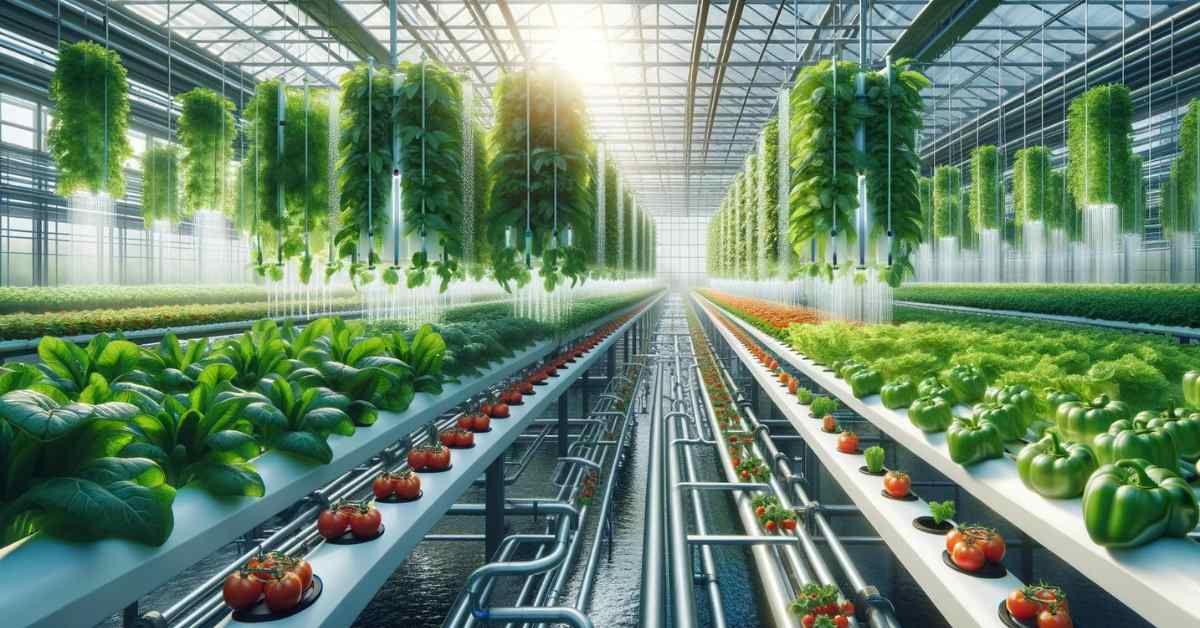Introduction to Hydroponics and the Hoagland Solution
Hydroponics, a method of growing plants without soil, has emerged as an innovative and sustainable solution to meet the increasing global food demand. This system offers an efficient way to cultivate crops in controlled environments, reducing water use and eliminating the need for arable land. The Hoagland solution, a nutrient formula designed specifically for hydroponic systems, plays a critical role in ensuring plants receive the necessary nutrients for optimal growth.
Hoagland hydroponics refers to the combination of hydroponic growing methods with the Hoagland solution, offering a reliable and widely used nutrient medium for various plants. This article will explore the environmental benefits, challenges, and implications of Hoagland hydroponics in sustainable agriculture, including its history, the science behind its nutrient formulation, and the environmental benefits it offers.
The History and Development of Hoagland Hydroponics
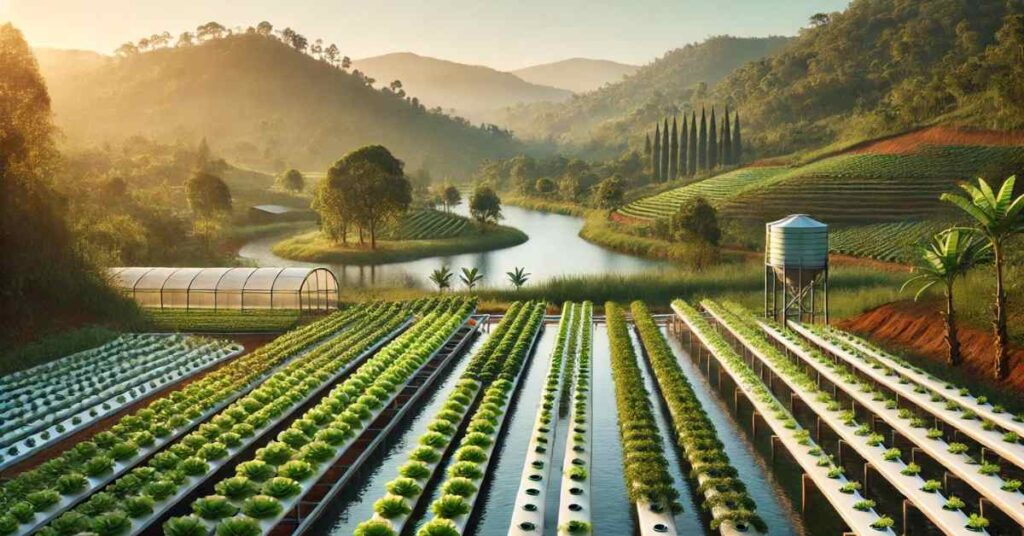
The development of Hoagland hydroponics traces back to 1938 when American plant physiologist Dr. Dennis Hoagland, alongside his colleague D.I. Arnon, developed a nutrient solution specifically for plant growth in water-based systems. Their work aimed to study plant nutrition more efficiently and eliminate the variability found in soil-based cultivation.
Initially developed for research purposes, the Hoagland solution soon found practical applications in hydroponics, a system that allows precise control of nutrient delivery to plants. The solution includes a combination of essential macro and micronutrients such as nitrogen, phosphorus, potassium, calcium, magnesium, and trace elements. This scientific innovation laid the foundation for modern hydroponic systems and remains a cornerstone in commercial and research-based hydroponics.
The Composition of Hoagland Solution
The Hoagland solution is a comprehensive nutrient blend that provides plants with all the essential elements required for growth. Here’s a breakdown of its key components:
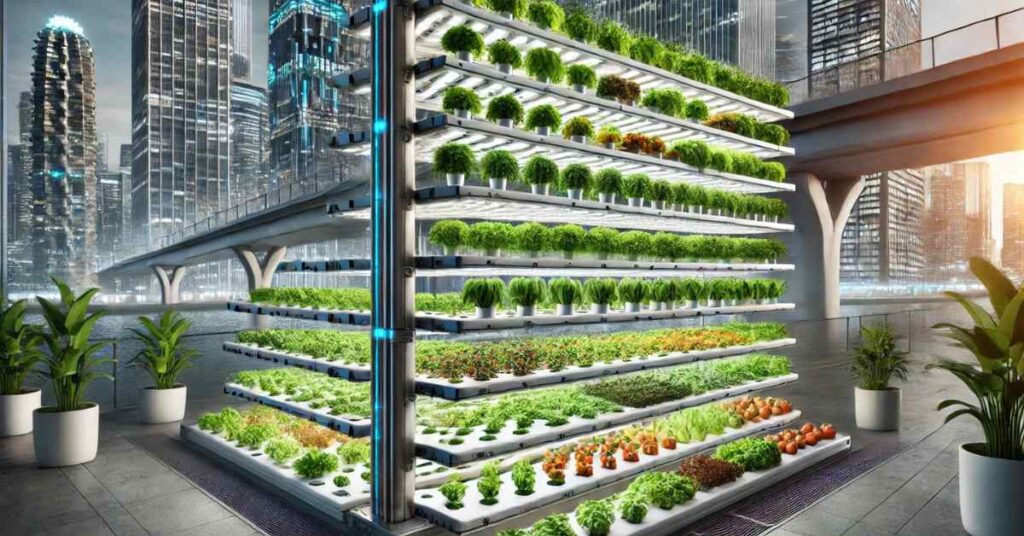
1. Macronutrients
- Nitrogen (N): Vital for plant growth, nitrogen is essential for the synthesis of amino acids, proteins, and chlorophyll. In the Hoagland solution, nitrogen is provided in the form of nitrate ions (NO3-).
- Phosphorus (P): Phosphorus plays a key role in energy transfer within the plant, particularly in the formation of ATP. It is provided in the solution as phosphate (H2PO4-).
- Potassium (K): This element is essential for enzyme activation and osmotic balance. In the Hoagland solution, potassium is delivered as potassium ions (K+).
- Calcium (Ca): Important for cell wall structure and cell division, calcium is added as calcium nitrate (Ca(NO3)2).
- Magnesium (Mg): Magnesium is the central atom in chlorophyll and is crucial for photosynthesis. The Hoagland solution provides magnesium as magnesium sulfate (MgSO4).
2. Micronutrients
- Iron (Fe): Iron is crucial for chlorophyll synthesis and enzyme function. It is usually added in the form of chelated iron to ensure it remains soluble in the hydroponic system.
- Manganese (Mn), Copper (Cu), Zinc (Zn), and Boron (B): These trace elements serve as cofactors for various enzymes and are essential for proper plant metabolism.
By delivering these nutrients in a precise and controlled manner, the Hoagland solution allows hydroponic systems to produce healthy, high-yield crops even in the absence of soil.
The Environmental Benefits of Hoagland Hydroponics
Hydroponics, combined with the Hoagland solution, offers several environmental benefits over traditional soil-based agriculture. These benefits make it an attractive solution for sustainable farming in a world facing challenges like climate change, resource depletion, and population growth.
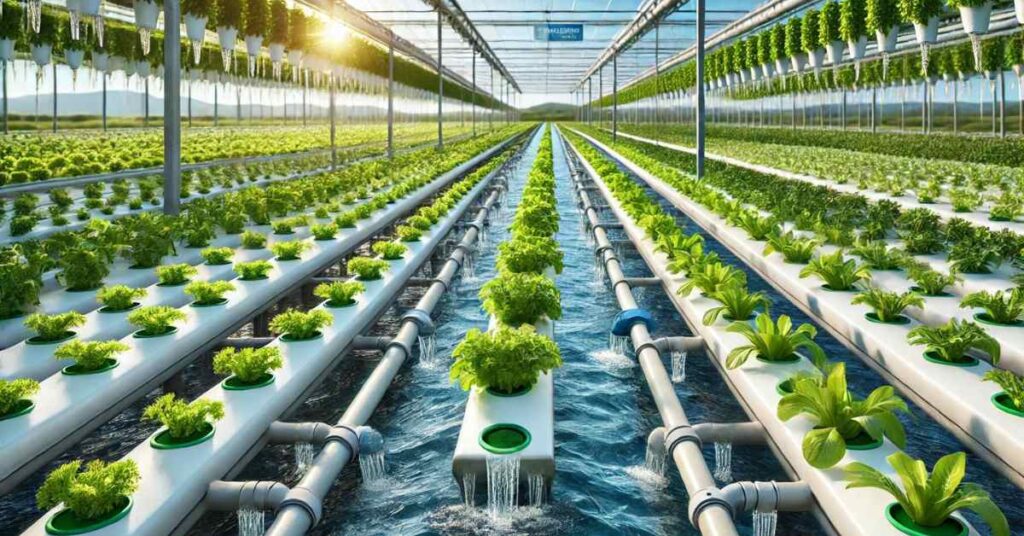
1. Water Conservation
One of the most significant environmental advantages of hydroponic systems is their water efficiency. Traditional agriculture can be highly water-intensive, with much of the water used for irrigation being lost to evaporation, runoff, or inefficient distribution. In contrast, hydroponic systems, including those using the Hoagland solution, recycle water within a closed-loop system. This results in water savings of up to 90% compared to conventional farming, making hydroponics ideal for arid regions or areas experiencing water scarcity.
2. Elimination of Soil Erosion
Soil erosion is a major environmental issue caused by conventional farming practices. It leads to the loss of fertile topsoil, reduces agricultural productivity, and contributes to sedimentation in waterways. Hoagland hydroponics eliminates the need for soil altogether, preventing erosion and preserving natural landscapes. By removing soil from the equation, this system allows crops to thrive without degrading the surrounding environment.
3. Reduction in Pesticide and Herbicide Use
Since hydroponics is a soilless cultivation method, there is no need for herbicides to manage weeds, and the controlled environment reduces the prevalence of pests. As a result, farmers can significantly reduce or even eliminate the use of chemical pesticides and herbicides, minimizing the release of harmful substances into the environment. This leads to cleaner water sources, healthier ecosystems, and reduced chemical exposure for farmworkers.
4. Optimized Use of Nutrients
In traditional farming, nutrient runoff can lead to the contamination of nearby water bodies, causing eutrophication and harming aquatic life. Hoagland hydroponics offers precise control over nutrient delivery, ensuring that plants receive the exact amount they need without excess waste. The closed-loop nature of hydroponic systems means that nutrients are recycled, reducing the likelihood of runoff and pollution. This not only benefits the environment but also maximizes the efficiency of nutrient use, reducing the need for synthetic fertilizers.
5. Space-Efficient Farming
Hoagland hydroponics allows for vertical farming and other innovative space-saving techniques. This means that more crops can be grown in smaller areas, making it possible to cultivate food in urban environments, greenhouses, or areas with limited arable land. By utilizing vertical space and reducing the footprint required for farming, hydroponics helps alleviate the pressure on natural ecosystems that are being converted into agricultural land.
6. Year-Round Production
Traditional agriculture is often limited by seasonal variations and weather conditions. Hoagland hydroponics enables year-round production in controlled environments, ensuring a consistent food supply. This not only increases food security but also reduces the need for land-clearing activities that contribute to habitat destruction and biodiversity loss.
Environmental Challenges of Hoagland Hydroponics
Despite its numerous environmental benefits, Hoagland hydroponics is not without challenges. It is essential to address these issues to ensure the long-term sustainability of hydroponic farming systems.

1. Energy Use
One of the main concerns associated with hydroponics is the energy required to maintain controlled environments, particularly in large-scale operations. Artificial lighting, temperature control, and water circulation systems all consume energy. If this energy comes from non-renewable sources, the carbon footprint of hydroponic farming can be substantial. However, advancements in energy-efficient technologies, coupled with the integration of renewable energy sources like solar and wind power, are helping to reduce this impact.
2. Nutrient Waste
While hydroponic systems are generally efficient in nutrient use, improper management or disposal of used nutrient solutions can still lead to environmental issues. If the solution is not recycled or disposed of correctly, it can contribute to nutrient pollution in nearby water bodies. Proper disposal methods and recycling techniques must be implemented to prevent environmental contamination.
3. Infrastructure and Cost
The initial setup cost of a hydroponic system can be high, especially for large-scale operations. Building greenhouses or indoor farms requires significant infrastructure investment. Additionally, access to the Hoagland solution and the necessary equipment may be a barrier for small-scale farmers or those in developing regions. However, as technology advances and costs decrease, hydroponic farming may become more accessible to a broader range of farmers.
Applications of Hoagland Hydroponics in Sustainable Agriculture
The versatility of Hoagland hydroponics makes it suitable for various applications in sustainable agriculture. From small-scale home gardens to large commercial operations, hydroponics offers a way to grow food efficiently and sustainably.
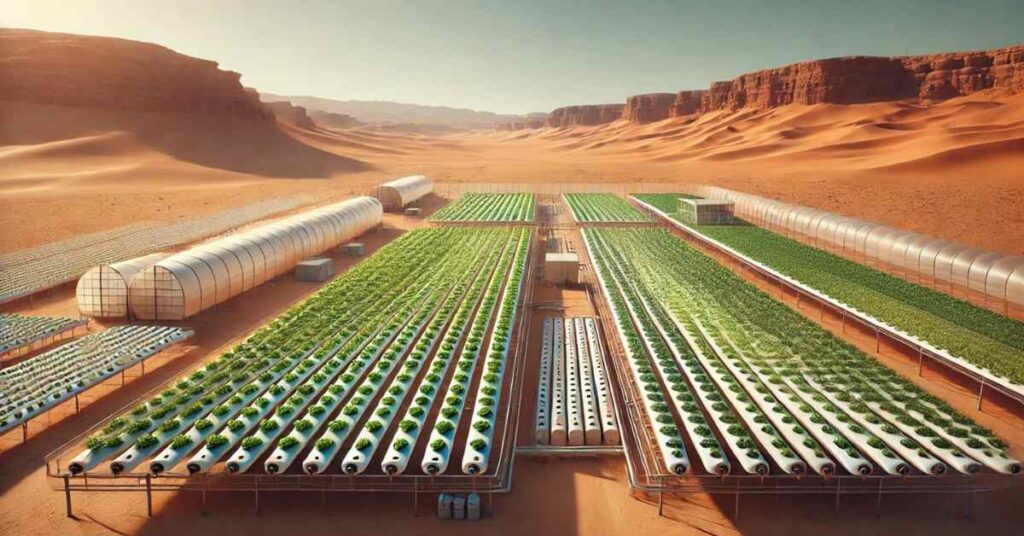
1. Urban Agriculture
As urban populations continue to grow, the demand for fresh, locally produced food is increasing. Hoagland hydroponics allows urban farmers to grow crops in limited spaces, such as rooftops, balconies, and indoor farms. By reducing the distance food travels from farm to table, urban hydroponics minimizes the environmental impact associated with transportation and helps to provide fresh produce to city dwellers.
2. Greenhouse Farming
Greenhouses provide an ideal environment for hydroponic systems, allowing for precise control over temperature, humidity, and light. Hoagland hydroponics can be integrated into greenhouse farming to maximize yields and minimize water use. This combination is particularly beneficial in regions with harsh climates where outdoor farming is not viable.
3. Sustainable Crop Production in Arid Regions
In regions with limited access to water or fertile soil, such as deserts, hydroponics offers a solution for sustainable crop production. By using the Hoagland solution in closed-loop hydroponic systems, farmers can grow crops using minimal water and avoid the challenges of cultivating in poor soil. This technology has the potential to increase food security in arid regions and reduce the need for environmentally damaging practices like irrigation and land clearing.
4. Education and Research
Hoagland hydroponics is widely used in educational institutions and research facilities to study plant nutrition, growth, and development. By growing plants in a controlled environment, researchers can isolate specific variables and gain a deeper understanding of plant biology. This research can inform future developments in sustainable agriculture and contribute to the advancement of agricultural technologies. By using Hoagland hydroponics in research, scientists can investigate the effects of different nutrient concentrations, environmental conditions, and even plant varieties to optimize growth and yields while minimizing resource use. Educational programs also introduce students to sustainable farming practices, emphasizing the importance of efficient resource management in addressing global food challenges.
Innovations and Technological Advancements in Hoagland Hydroponics
Hoagland hydroponics continues to evolve with technological innovations that improve efficiency, sustainability, and scalability. These advancements are helping to address some of the environmental challenges associated with hydroponic systems while expanding their potential applications.
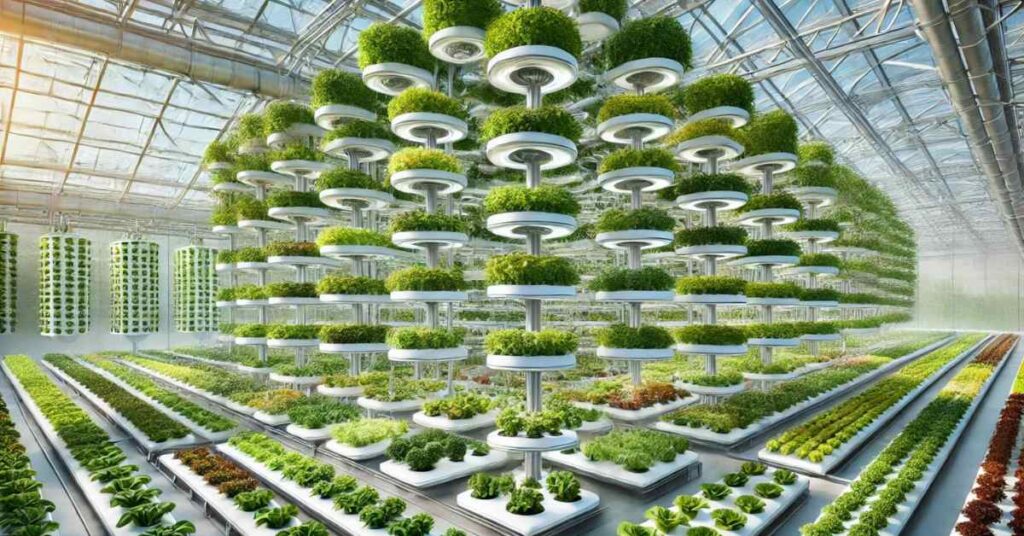
1. Automation and Smart Farming
The integration of automation and smart technologies is transforming hydroponic farming. Sensors, data analytics, and machine learning allow farmers to monitor and control nutrient levels, water usage, pH balance, and environmental conditions in real time. These systems can automatically adjust nutrient delivery based on the plant’s needs, optimizing growth and reducing waste. By fine-tuning the conditions in which plants grow, automation enhances resource efficiency and minimizes the environmental footprint of hydroponic farms.
2. Energy-Efficient Lighting
Artificial lighting is one of the major energy consumers in hydroponic systems, particularly in indoor or greenhouse settings. However, advances in energy-efficient lighting, such as LED grow lights, are reducing the environmental impact of hydroponics. LED lights are highly efficient and can be tailored to provide the specific wavelengths of light that plants require for photosynthesis. This targeted lighting reduces energy consumption and improves plant growth, contributing to more sustainable hydroponic farming.
3. Solar-Powered Hydroponic Systems
To mitigate the environmental impact of energy consumption, some hydroponic farms are adopting solar power as a renewable energy source. Solar panels can be used to generate electricity for lighting, water pumps, and climate control systems, reducing reliance on fossil fuels. Solar-powered hydroponic systems are especially beneficial in regions with abundant sunlight, where they can operate independently of the electrical grid. This not only reduces carbon emissions but also lowers operational costs, making hydroponic farming more sustainable and accessible.
4. Aquaponics Integration
Aquaponics is a hybrid system that combines hydroponics with aquaculture, the practice of raising fish in a controlled environment. In an aquaponic system, fish waste provides a natural source of nutrients for plants, while the plants help filter and clean the water for the fish. This symbiotic relationship creates a closed-loop system that reduces the need for synthetic nutrients, such as those in the Hoagland solution, and minimizes waste. Aquaponics represents a sustainable, low-impact approach to food production that integrates animal and plant farming in a mutually beneficial way.
5. Biodegradable Growing Media
While hydroponic systems eliminate the need for soil, they often rely on inert growing media, such as rock wool or perlite, to support plant roots. Some of these materials are not biodegradable and can contribute to waste. Recent innovations have focused on developing biodegradable or renewable growing media, such as coconut coir or peat moss, which can be composted or recycled at the end of their use. These sustainable growing media further reduce the environmental impact of hydroponic farming.
Hoagland Hydroponics and Global Food Security
As the global population continues to grow, so does the need for sustainable food production systems that can provide healthy, nutritious food without placing undue strain on natural resources. Hoagland hydroponics offers a solution to many of the challenges facing conventional agriculture, such as limited arable land, water scarcity, and environmental degradation.

1. Increasing Food Production in Urban Areas
By enabling high-density farming in urban environments, Hoagland hydroponics can help meet the food needs of growing urban populations. Vertical farms, rooftop gardens, and indoor hydroponic systems can be established in cities, reducing the need to transport food over long distances and minimizing food loss during distribution. Urban hydroponic farms can grow a wide variety of crops, including leafy greens, herbs, and even fruiting plants like tomatoes and cucumbers, all year round. This contributes to a more localized and resilient food supply chain.
2. Addressing Food Insecurity in Arid and Poor-Soil Regions
In regions where traditional agriculture is challenging due to poor soil quality, water scarcity, or extreme climates, Hoagland hydroponics offers a practical solution. By growing crops in soilless systems that require minimal water, hydroponics can provide food security in areas that would otherwise be unable to sustain agricultural activities. Countries in the Middle East, Africa, and Southeast Asia are already adopting hydroponic farming to address food shortages and reduce reliance on food imports. These systems can be adapted to local conditions, ensuring that communities have access to fresh, locally-grown produce.
3. Combatting the Environmental Impact of Industrial Agriculture
Large-scale industrial agriculture has contributed to deforestation, biodiversity loss, and soil degradation. Hoagland hydroponics can help reduce the environmental pressures associated with conventional farming by allowing crops to be grown in controlled environments that do not require the conversion of natural ecosystems into farmland. By minimizing the need for pesticides, herbicides, and synthetic fertilizers, hydroponic farming reduces chemical pollution and supports healthier ecosystems. Furthermore, the water-saving benefits of hydroponics are crucial in regions facing droughts and water shortages, where agricultural water use is a major concern.
The Role of Policy and Education in Advancing Hoagland Hydroponics
For Hoagland hydroponics to realize its full potential as a sustainable agricultural solution, supportive policies and widespread education are essential. Governments, educational institutions, and industry stakeholders all play a role in promoting and expanding the use of hydroponic systems.

1. Government Incentives and Support
Government policies that incentivize the adoption of hydroponic farming can encourage more farmers to transition to sustainable agricultural practices. These incentives may include grants, subsidies, or tax breaks for farmers who invest in hydroponic systems, as well as funding for research and development to improve hydroponic technology. Policies that promote renewable energy integration, such as solar power, into hydroponic farms can also help reduce the carbon footprint of these systems.
2. Educational Programs and Public Awareness
Education is critical to fostering the next generation of farmers, researchers, and innovators in the field of hydroponics. Schools, universities, and agricultural institutions should incorporate hydroponics into their curricula to teach students about sustainable farming practices and the importance of resource conservation. Public awareness campaigns can also help consumers understand the benefits of hydroponically grown produce and encourage more widespread acceptance of this farming method. By raising awareness about the environmental advantages of Hoagland hydroponics, these initiatives can help drive demand for sustainably produced food.
3. Collaboration Between Industry and Research
Collaboration between the private sector and research institutions is essential to advancing the technology and sustainability of Hoagland hydroponics. Industry players can partner with universities and research centers to develop new innovations, such as more efficient nutrient delivery systems, energy-saving technologies, and biodegradable materials for growing media. These partnerships can accelerate the commercialization of sustainable hydroponic solutions and make them more accessible to farmers around the world.
Conclusion: The Future of Hoagland Hydroponics in Sustainable Agriculture
Hoagland hydroponics represents a powerful tool for addressing some of the most pressing environmental and agricultural challenges of our time. By providing a precise, resource-efficient method for growing crops, this system reduces water use, eliminates soil degradation, and minimizes chemical inputs, making it a more sustainable alternative to traditional farming methods. As technology continues to evolve, the potential of hydroponic farming to revolutionize agriculture and contribute to global food security is becoming increasingly clear.
However, realizing the full potential of Hoagland hydroponics requires continued investment in research, education, and sustainable infrastructure. By embracing the principles of environmental stewardship and promoting the adoption of hydroponic systems, we can move toward a more resilient, sustainable food system that benefits both people and the planet.
As we look to the future, Hoagland hydroponics will likely play an integral role in the development of urban agriculture, the expansion of food production in challenging environments, and the mitigation of the environmental impact of industrial agriculture. By optimizing the use of resources and reducing our ecological footprint, Hoagland Hydroponics offers a path toward a more sustainable and secure future for global agriculture.
Read More: The Complete Guide to Hydroponics and Hydroponic Systems

